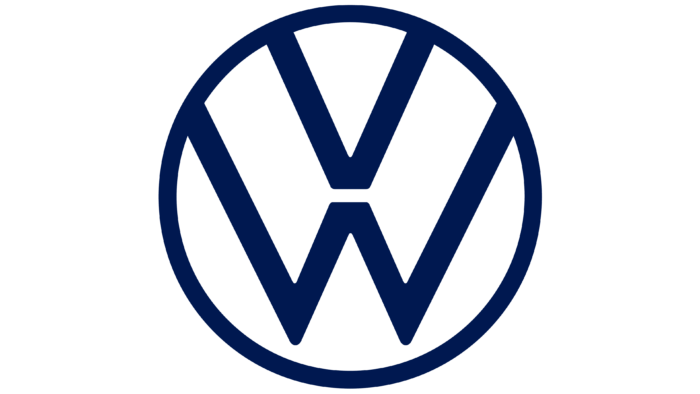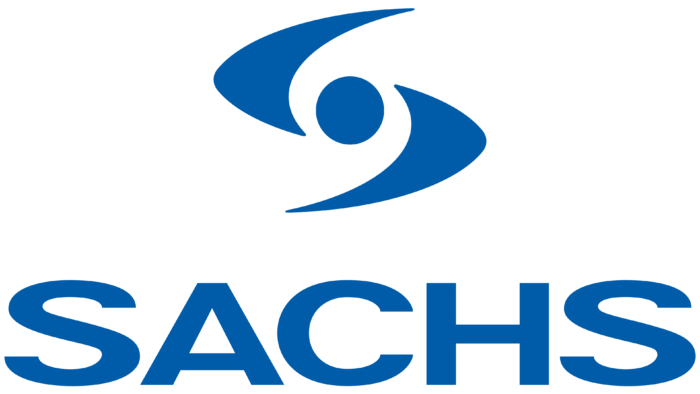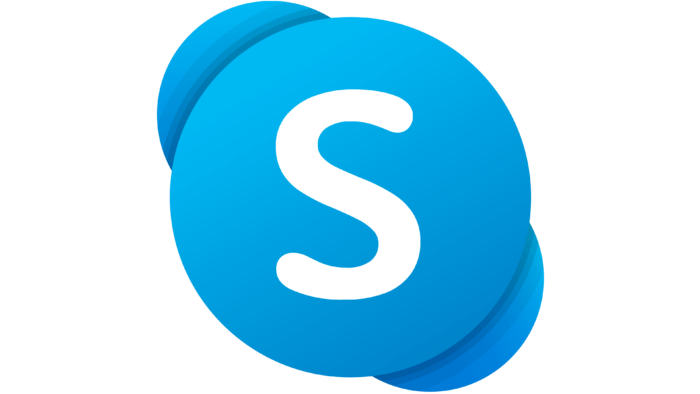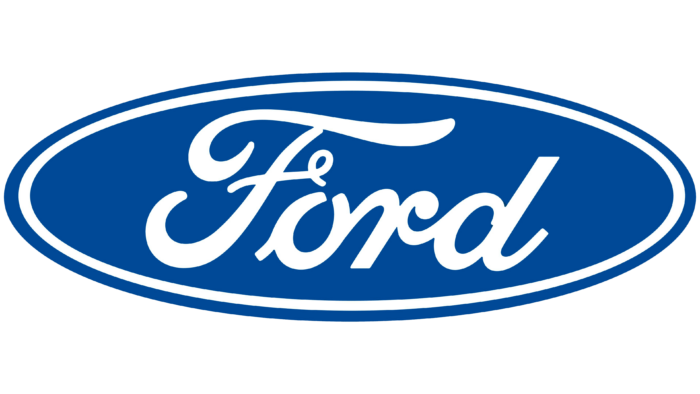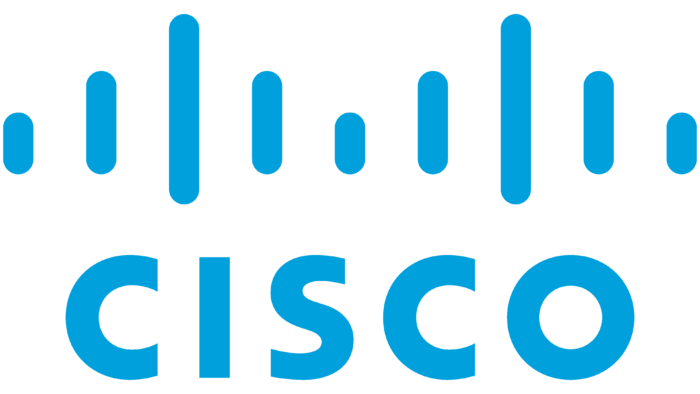What do Boeing, Oral-B, and Windows have in common? All of these brands use blue color logos. Of course, their shades are slightly different, as the meaning depends on it. It is believed, for example, that light colors look modern and fresh, and dark colors are solid and representative. Although, in fact, the blue color is associated with a variety of phenomena and concepts: freedom, boundless expanses, clear sky, coolness, tranquility, and silence. It creates a feeling of stability, order, security, trust, and reliability.
No wonder that for many companies, this color has become the basis of their identity. We are talking about both serious technological and financial organizations and those whose activities are related to entertainment. After all, each shade of blue evokes certain emotions and often radically opposite ones. For example, while in the United States, aquamarine is perceived as a symbol of fidelity, in China, it is associated with mourning. This means that when developing a design, companies need to adjust to the psychology of those or other consumers.
Let’s see what variants of the blue logo are used by world-famous brands and how they have used the chosen color in their visual identity. This review includes representatives from different countries and is not limited to any one business segment. All emblems are arranged in random order and are mostly monochromatic, with few exceptions.
Windows
Windows logos used to be colored because they used Microsoft’s corporate colors. But that all changed in 2012 with the release of the Windows 8 operating system. Pentagram designers created an all-blue flag graphic for it, which smoothly transforms into a window. In this case, the drawing is based on the idea of perspective: the volume is created by stretching lines in the distance. This emblem has been preserved almost unchanged in all subsequent versions of the OS, except that the shades and neighboring inscriptions have changed. The composition consists of four blue quadrilaterals arranged in pairs: two at the top and two at the bottom. They are separated by a peculiar frame of thin white stripes.
Nestle
The Swiss corporation Nestle has a black and white version of the logo and a blue one with the addition of white elements. At the bottom is written the name of the food manufacturer, for which the designers chose a font similar to Helvetica. And on top is the iconic image of a nest and a bird with two chicks. This picture symbolizes the process of feeding and, at the same time, personifies the name of the company, as it means “small nest” in German. The image itself was taken from the family crest of the founder of Nestle. Blue color, in this case, is used for bold letters and outlines of the emblem. Thanks to the dark shade, thin lines are visible on the screens of mobile devices.
Intel
The modern Intel logo is predominantly black, but the previous version, which existed from 2006-2020, was entirely blue. The American company, which produces components for electronic systems, commissioned its development to the British studio FutureBrand. The designers placed the brand name in the center of the so-called vortex, consisting of two semi-oval stripes. And one of them started exactly where the lower “l” ended, which looked like a continuation of the letter. But they were not a single whole: both lines forming the frame were separated from each other and from the surrounding elements by white indents. The lettering was done in a modified Intel Clear font by Dalton Maag and Red Peak Branding. The blue color palette, on the other hand, was not new: it was used in the first logo, which appeared in 1968.
Warner Brothers
Warner Brothers is the leader of the American movie industry. This company has been working in the entertainment industry since 1923, but the blue logo appeared relatively recently – in 2019. It represents an iconic shield with a pointed base and a shaped top. Inside are the letters “W” and “B,” which take up most of the space. Pentagram’s designers adapted their shape so that the bottom is pointed and the top is flared like a shield. The dark blue hue is combined with pure white to create an eye-catching contrast. This color scheme is completely contrary to what has been seen before, as all previous Warner Brothers emblems were either red-gold or black and white.
Volkswagen
As stated on the official website of Volkswagen, the blue color in its emblem symbolizes high class, reliability, and impeccability. These are the qualities that can characterize the cars of this manufacturer. It is combined with white color – a symbol of purity and nobility. This color scheme is represented in a minimalist badge consisting of a dark blue ring and two letters on a white background. Designers traditionally use the letters “V” and “W,” placing them in such a way that their free ends connect to the round frame. As before, the “W” is at the bottom and has a shortened center, while the “V” rises directly above it.
AT&T
Telecommunications conglomerate AT&T has been using bright blue logos with various structures for many years. It started in 1969 when famous designer Saul Bass created a graphic for the company in the form of a bluebell. Subsequently, the shape of the emblem changed, but the color remained the same, except for a slight adjustment in hue. Now, the emblem depicts a stylized globe, unofficially named “Death Star.” It is formed by white and blue stripes of different thicknesses, which symbolize the telecommunications network. Sometimes, the pattern is combined with the black inscription “AT&T” located on the right or bottom.
Sachs
This German company appeared in 1895 and ceased to exist in 2011, merging with ZF Friedrichshafen AG and becoming its brand under the name Fichtel & Sachs. The company specializes in automotive components, suspensions, and engines. In the past, it also dealt with spare parts for two-wheelers and ATVs. Therefore, the Sachs emblem is known among high-speed enthusiasts. The blue emblem demonstrates stability and reliability, motivation for constant development, zeal, and movement towards new horizons. And all because it chose the celestial hue. The visual identity includes a pictogram that encodes the pedal block of a moped or bicycle. These are two bold arches placed on the sides and a small circle between them. The header is located on the right side. It is chopped, flat, austere, and stretched wide.
Visa
After a redesign in 2014, the Visa payment system logo became completely blue. As for the period before 2014, the wordmark was two-colored: the first letter, “V,” had an orange upper left corner with a serif. The bright golden hue symbolized the California hills. This made the lettering contrasting, interesting, and memorable. The word “VISA” now consisted of bold italicized glyphs. And none of them, except for the first one, had serifs. As the brand is associated with finance, its blue color is associated with security, confidence, and reliability.
IBM
Another famous blue logo belongs to IBM, an electronics and software company. The iconic badge contains three letters of its name written in block font with large rectangular serifs. “I,” “B,” and “M” consist of eight horizontal bars. The dotted lines are colored bright blue and separated by white space. They symbolize dynamism and speed – this is the meaning invested in them by designer Paul Rand. In addition, the original design is associated with digital technology and 8-bit systems.
Vimeo
Everyone has already forgotten what the first Vimeo logo looked like a strict black inscription consisting of thin capital letters. Now, users recognize the video hosting service solely by the blue word mark, which is made in elegant cursive handwriting imitating handwriting. All letters are lowercase, smooth, and slightly rounded. The light shade conveys a calm mood, inspires subconscious confidence, and creates a friendly atmosphere. A modified version of the Black Rose font designed by Michael Hagemann is used for the same purpose. Softened corners and sliding curves complete the logo, so it does not need additional graphic elements.
HP
The blue color in the HP logo has a special function: it is used as an ambient background for the negative space in which the white letters “h” and “p” are visible. That is, the symbol of the information technology company reflects its name, which is made up of the surnames of the founders: Hewlett and Packard. Both glyphs are lowercase and are written in bold italics inside a blue circle. Their diagonal lines have the same slant to the right side, and the longest strokes reach the edge of the circular base and divide it into two halves of roughly equal size. A simple sans-serif font and a bright, expressive shade of blue symbolize the company’s professionalism, reliability, and progressiveness.
Unilever
The logo of this manufacturer of household chemicals and food products has so many details that they are perceived not separately but as a whole. Small images of clothes, plants, animals, insects, natural phenomena, and various objects reflect the brands with which Unilever is associated and are folded into a large letter “U.” All of them are colored in dark blue, a symbol of peace and constancy. This shade was chosen by the British advertising agency Wolff Olins, which was responsible for all stages of creating the new emblem. The ideological inspirer was Lee Coomber. Under the stylized letter “U” is written the name of the manufacturer, for which a set of individual glyphs with an imitation of a handwritten script is used.
Gillette
In the basic version, the Gillette logo is black, but on the labels of cosmetic products and razor systems, the inscription can be colored dark blue. The wordmark contains only the company name typed in bold italics. The font chosen resembles a heavily modified Futura Extra Black Italic. The designers thickened the letters, connected the two “t” letters with one horizontal stroke, and replaced the dot above the “i” with a rectangular trapezoid. The blue color balances the visually heavy lettering, making it softer and more expressive.
The Twitter logo is impossible to imagine in any other color than blue. Many people have already forgotten that in the early days of the social network, it was green, and various shades of blue and azure began to be used only after 2006. As for the current design, it appeared in 2012. Since then, the American microblogging service has been associated with a small bird. The inspiration for the creation of this symbol was a fluttering hummingbird. Graphic artist Martin Grasser tried to convey the feeling of flight by depicting the smooth curves of the body, head, beak, and feathers with the help of layered circles. The blue color also represents lightness as well as the stability and security of Twitter.
Hyundai
The blue color in the Hyundai logo indicates the core values of the Korean auto giant: strength, impeccability, and high-quality products. At the same time, the dark palette speaks of a serious approach to the production process, calmness, and poise. The main emphasis in the emblem is made on the letter “H.” It is stylized, made with a smooth contour, and slightly sloping to the right. Thanks to its visual softness, the glyph does not cause a sense of tension and well balances the dark blue color. The background is an oval frame arranged horizontally. The upper and lower ends of the letter completely merge with it.
General Electric
General Electric is not limited to a single sphere of activity. It produces a wide range of products – from nuclear warheads to light bulbs, so its logo is not tied to specific industries. The round medallion has the most neutral design and is decorated with a nonsensical pattern of four curved lines with drop-shaped bulges at the ends. The stripes face the center, where the united letters of the monogram “GE,” which has spirals and curls, are located. The decorative ornament and the abbreviation are colored white to stand out well against the blue circle.
Skype
The old Skype logos were orange-red, and the blue color appeared in the corporate style of the company and the eponymous program only in 2005. The current brand symbol contains a white letter “S” with rounded ends. It is depicted inside a large blue circle, which is superimposed on two other circles of the same color. The figures in the background are much smaller. They are visible only partially: their fragments protrude from opposite sides of the emblem and have blue shadows of several shades. The gradient gives the image volume and makes it progressive, reinforcing associations with modern technology.
Ford
Ford is the common name of an automobile brand and the automaker that owns it. This word is depicted on the logo created back in 1965. Previously, the emblem was black and white, but then the developers repainted the ellipse in dark blue. On this background, the light-colored letters stand out perfectly. Childe Harold Wills created the text at the personal request of the founder of the company, so Henry Ford approved the elegant curl at the letter “F.” The color scheme was also chosen not by chance: if white represents nobility and purity, then blue (especially of such a deep shade) symbolizes reliability and superiority.
Samsung
Samsung is the largest South Korean business conglomerate. Its structure includes many enterprises engaged in the production of electronics, insurance services, shipbuilding, and other activities. Therefore, the logo of the diversified company has a universal design: it contains an inscription made in angular sans-serif font. The font simultaneously resembles Helvetica Black and DDT Cond SemiBold. The white word “SAMSUNG” is inside a dark blue ellipse. Because the base is turned diagonally, the outermost letters touch its border.
Pfizer
Pfizer is an American drug manufacturer that made it to this list due to its signature blue logo. After a redesign in 2021, it now features two shades at once: light and dark. The first symbolizes hope, optimism, kindness, and eternity, while the second symbolizes professionalism, progress, and seriousness. The figurative element in the form of a spiral resembles a DNA chain associated with medicine. On the right side is an equally original inscription in an individual slanted font. The letter “f” is connected to the “i” by a horizontal line, and the letter “r” with a thick dot at the end attracts attention.
Since Facebook is one of the most visited websites in the world, its logo is familiar to many users. It is a blue lettering typed in one of the subtypes of the Klavika font and placed on a white background. But few people know that the colors for the wordmark were chosen in connection with Mark Zuckerberg’s illness. As it turned out, the creator of the social network suffers from partial color blindness and distinguishes only blue shades.
PayPal
In the logo of the largest payment system, PayPal, three shades of blue are used at once. All of them are represented in the monogram of letters “PP,” which are stacked together. The lower letter “P” is light, and the upper one is a little darker. And in the area of their intersection, the color is the darkest. This stylish badge was created by the advertising agency Fuseproject. It symbolizes trust and transparency in relations with clients. The inscription on the right is also blue, but it has only two shades: the first three letters are dark, and the rest are light. At the same time, the font of both parts of the PayPal name is the same: a modified version of the italicized font of the Futura family.
Disney+
The blue Disney+ logo also has many shades, and they are presented in the form of a gradient band forming an arc over the name of this streaming service. One side of the arc, the darkest, starts from the “+” sign, and the second side, light blue, dissolves into space somewhere above the letter “D.” As for the inscription, it is made in a uniform dark blue color without transitions. The chosen shade is Persian Blue (#113CCF). It represents the expectation of something fabulous and exciting and symbolizes a good mood. The wordmark font is based on Walt Disney’s personal signature, but the designers, of course, changed some glyphs to harmonize the proportions. Justin Callaghan later created a similar typeface, Waltograph.
P&G
P&G is another company that cannot be imagined without a blue logo. The consumer goods manufacturer, also known as Procter & Gamble, uses a word mark displaying its abbreviated name. The glyphs are typed in upper case and slightly slanted to the right. The bold italic is similar to DSType’s Breve News Bold Italic, but very distantly, as P&G has sharper serifs and smoother curves. The ampersand and letters are colored in the same shade of blue, which looks bright and promising. It also looks concise enough to reflect the company’s professional approach to everything it does.
Oral B
Procter & Gamble has many brands that, like their parent company, use logos with a predominantly blue color. An example is the world-famous Oral-B brand of oral hygiene products. The designers placed its name inside a rectangular oval, stretched horizontally and rounded on both sides. The white lettering on a blue base looks like the result of using negative space when the shape of objects is “cut” inside the image. The font is also unusual: the logo designers chose Neue Haas Grotesk Black Italic bold italic but reduced the distance between letters by joining “r” and “a” together. They also brought the hyphen closer to the “B” so that it became an extension of the glyph.
Philips
This Dutch company used to produce home appliances and electronics, but now it is involved in medical technology. Therefore, the soothing color of the Philips logo corresponds to its field of activity. After all, blue and white colors are part of the medical palette. They inspire confidence, carefreeness, stability, and reliability. The emblem consists of the name, typed grotesque. The font is bold, uppercase, geometric, and businesslike, which indicates the seriousness of the corporation. It lacks smooth lines, and the glyphs resemble vertically oriented rectangles. The exception is the letter “S,” which has a rounding. Like the “L,” it has diagonal cuts at the ends.
Dell
The company Dell is one of the leaders in the manufacture of computers. Therefore, the blue color in the company’s logo evokes a sense of trust and is associated with reliability and confidence. The designers chose a calm shade without bright transitions. In addition, they created a simple structure sign, which at the same time symbolizes simplicity and a non-standard approach. Inside the minimalistic ring is the brand name in upper case. The letter “E” is slightly inverted: it stands in the lower left corner, connecting the letters “D” and “L”. The inner circle is white, while the lettering and frame are blue.
Nokia
Finnish company Nokia, which produces mainly telecommunication equipment, also likes everything blue. At least, its name on the logo is written in this color. The designers decided on a rich, dark shade to demonstrate the seriousness of the brand. A non-standard font, Nokia Pure, is used as the main font. Grotesque with a lot of angles looks solid and looks especially good in blue color.
Cisco
Cisco, which is the largest manufacturer of networking equipment, is characterized by a strict and laconic style. To create just such an image of the technology company, the blue color is represented in both parts of its logo: both in the word mark and in the above composition of vertical stripes of different lengths. These lines simultaneously resemble radio waves and symbolize one of the main attractions of the city of San Francisco – the bridge “Golden Gate.” The name Cisco is typed in geometric font sans-serif Futura Bold and consists entirely of lowercase letters.
Boeing
The Boeing logo in this list is the most symbolic because the aircraft manufacturers automatically associate the blue color with the sky, space, freedom, flight, and the absence of borders. At the same time, the American corporation is engaged in the production of military and space equipment, which is reflected in the elements of its emblem:
- The circle represents our planet.
- Arc represents the trace of a flying rocket.
- The triangle represents military aviation.
The name of the brand is presented separately: it is written next to the image in bold italics Stratotype.
American Express
In the case of the financial company American Express, the blue color of the logo symbolizes stability, reliability, eternity, and honesty. On a subconscious level, it creates an aura of calm, so the name of the organization is presented in a blue gradient. The designers chose a combination of soothing shades and, for contrast, circled the letters with wide white contours. The two-line inscription is inside the square and evenly distributed: the first word is aligned on the left edge, and the second is on the right edge. The sans-serif font was developed specifically for American Express and has undergone minor changes after the redesign.





